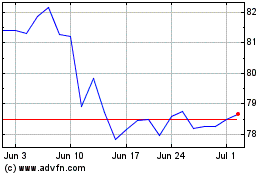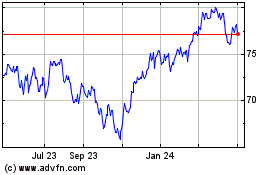In total, the first quarter of 2012 was a great year for the ETF
industry. Issuers saw 85 new products hit the market—while 16 were
delisted—and net inflows reached nearly $56 billion in the time
period. This surge in interest, as well as the strong performance
of the market, led total ETF assets to hit the $1.2 trillion mark
heading into Q2.
Yet while the time period was pretty solid overall, a few funds
saw declining levels of interest heading into the second quarter.
Of the relatively few funds that saw outflows in terms of assets
under management in the first quarter, just three managed to see
levels decline by more than one billion dollars in the time period
(read Three ETFs With Incredible Diversification).
Surprisingly, these three have little in common suggesting that
declining interest isn’t concentrated in one sector of the market.
Instead, investors seem to have a broad falling out with several
segments across the global economy including an individual country,
a U.S. sector, and even a broad regional product too.
Furthermore, all three have gained more than $1.5 billion in
assets over the past three year period suggesting that investors
aren’t exactly fed up with these ETFs, just that some may be
seeking better opportunities elsewhere. No matter the reason, these
billion dollar outflows are still pretty astounding given the broad
market strength, especially considering they all focus in on
stocks.
Below, we highlight these three mega losers from the first
quarter and give our thoughts behind why we think these funds have
seen such a hard time despite an overall positive investing
environment:
Select Sector SPDR Utilities Fund
(XLU)
-$1.1 billion in outflows
The easiest outflows to explain on this list came from State
Street’s XLU. The product is highly defensive in nature and is
usually thought of as a good play in bear markets thanks to its
high yield and relatively recession proof business structure.
While these traits can be huge positives, they can be to a
fund’s determent during a bull run like the one we saw in the first
quarter. During this time period, XLU lost about 2.6% while the
S&P 500 added more than 12% in comparison. This produced an
incredible gap between the two products and was undoubtedly one of
the main culprits for the slump in assets in the fund (see charts
of XLU here).
Interestingly, the lost of the $1.1 billion in assets looks to
cost State Street roughly $1.98 million in revenues on an annual
basis, based on the expense ratio of 18 basis points.
Instead of this fund, it appears from a U.S. sector perspective
products in the financial and energy spaces were extremely popular.
XLE added almost $950 million for the energy space
while the financial sector, as represented by XLF,
put on about $800 million in assets for the quarter.
iShares MSCI Brazil Index Fund
(EWZ) -$1.35 billion in
outflows
The biggest loser in Q1 from an individual market perspective—as
well as the second biggest overall—was iShares’ EWZ. The product
lost about $1.35 billion in the time period and has actually seen
outflows of about $1.8 billion over the past 52 weeks.
Part of the reason for this could be growing worry over the
Brazilian market, especially in the face of inflation and uncertain
commodity prices. Additionally, the country’s government seems
uncommitted to stopping inflation as some policy makers are looking
to loosen rates in order to further stimulate demand across the
country.
Beyond this, some investors may just be getting sick of the
heavily concentrated nature of EWZ, especially when compared to
other products targeting the nation. In fact, EWZ puts close to 60%
of its assets in three sectors including 16.7% in Petrobras and
11.6% in Vale.
The loss looks to be even more hurtful to iShares’ bottom line;
based on the 59 basis point expense ratio, the loss in the first
quarter looks to cost the company roughly $7.97 million in revenues
over the course of a full year (see more on funds on the Zacks ETF
home page).
Instead of EWZ, it appears as though investors have been more
partial to ETFs targeting Russia, China, and developed markets in
Europe such as Germany. In terms of other South American funds, all
the other products tracking Brazil saw inflows—albeit modest—while
Chile led the way in terms of country specific inflows in Latin
America.
iShares MSCI EAFE ETF
(EFA) -$2.43 billion in
outflows
By far the biggest loser in terms of AUM in the first quarter
was iShares’ EFA. The fund tracks a broad swath of countries with
the heaviest weights going to companies based in Japan, the UK, and
Switzerland. The product saw outflows of nearly $2.5 billion in the
quarter although AUM is still quite robust coming in at just over
$38 billion overall (see The Trend Is Your Friend With These Three
ETFs).
Part of the reason for the big losses in AUM could be due to
increased worries over several developed markets in the European
region, especially large markets such as Spain and France. In fact,
outflows were up to about $1.2 billion March alone and totaled
close to half a billion the final week of the period. This could
signal that investors are finally fed up with these low growth
markets and that investors are cycling into higher growth sectors
instead for the second quarter.
While this may be a compelling reason for the outflows, a far
more likely reason is the rise of a key competitor, the
Vanguard MSCI EAFE ETF
(VEA). This Vanguard
fund tracks the exact same index as its iShares counterpart but
does so at a fraction of the price, charging investors just 12
basis points a year in fees compared to 0.35% for EFA (read Five
Cheaper ETFs You Probably Overlooked).
This product has seen inflows of $1.16 billion so far in 2012
and close to $2.8 billion over the past 52 weeks suggesting that
this fund has taken up the slack in EFA for the most recent
quarter. Given this, it appears as though investors may not be too
dismayed with the performance of the EAFE region and that instead
they are flowing towards lower cost products for similar
exposure.
This shift hasn’t been good news for iShares though, as the loss
of $2.43 billion in assets looks to translate to lower revenues of
about $8.5 million for the company over the course of the year.
Want the latest recommendations from Zacks Investment Research?
Today, you can download 7 Best Stocks for the Next 30
Days. Click to get this free report >>
To read this article on Zacks.com click here.
Zacks Investment Research
Want the latest recommendations from Zacks Investment Research?
Today, you can download 7 Best Stocks for the Next 30 Days. Click
to get this free report
iShares MSCI EAFE (AMEX:EFA)
Historical Stock Chart
From Mar 2024 to Apr 2024

iShares MSCI EAFE (AMEX:EFA)
Historical Stock Chart
From Apr 2023 to Apr 2024
